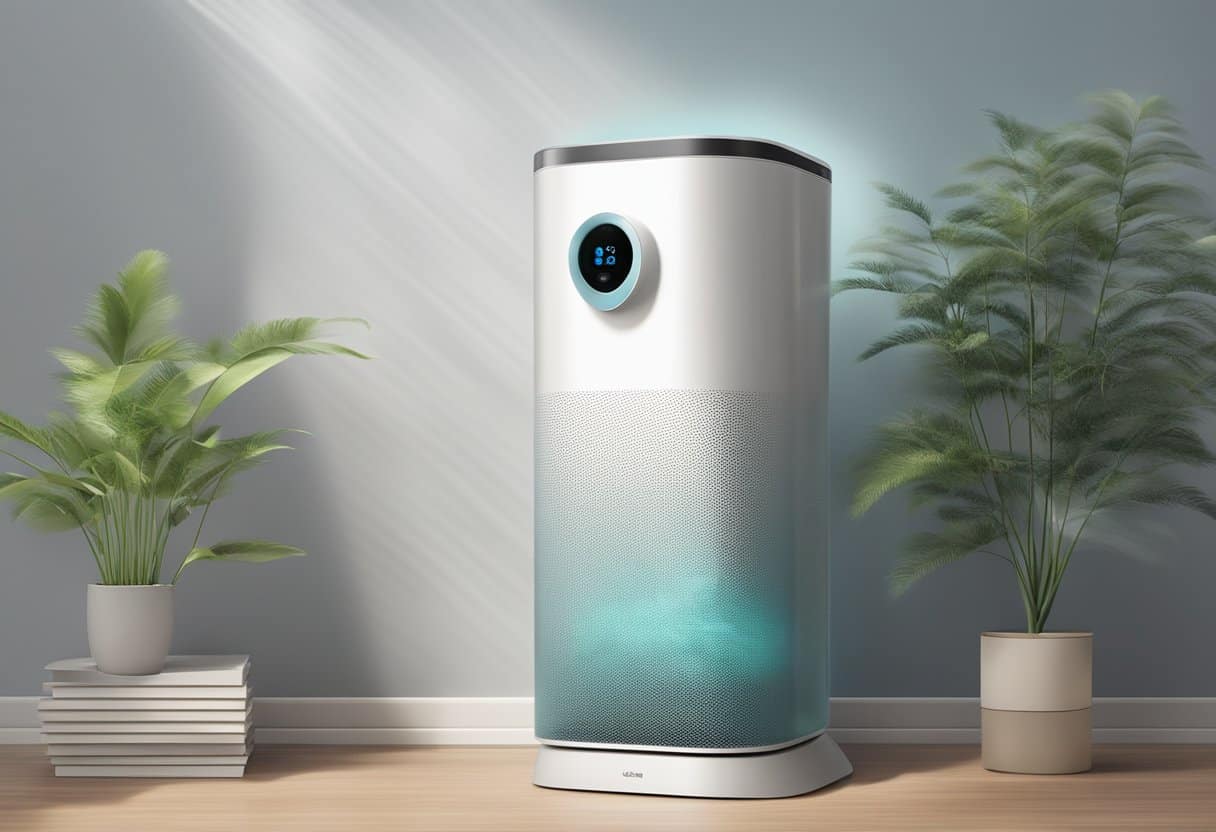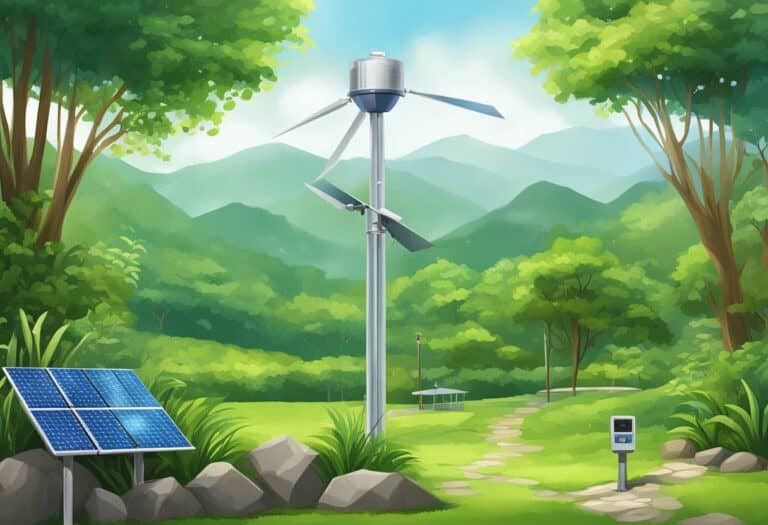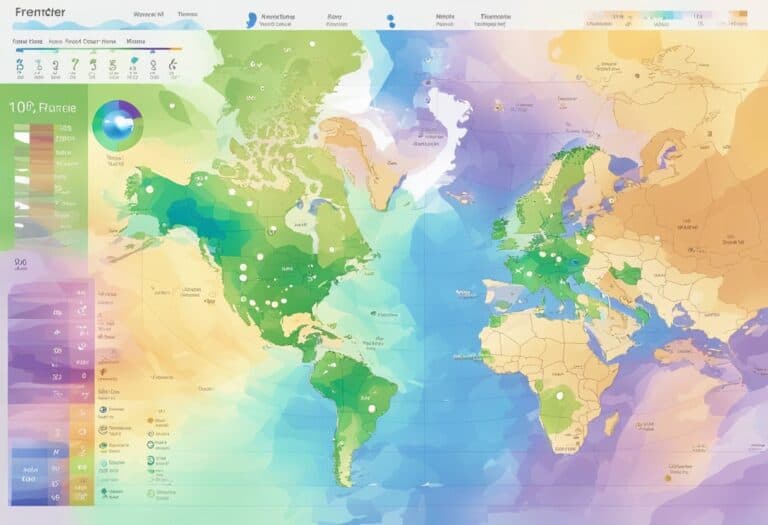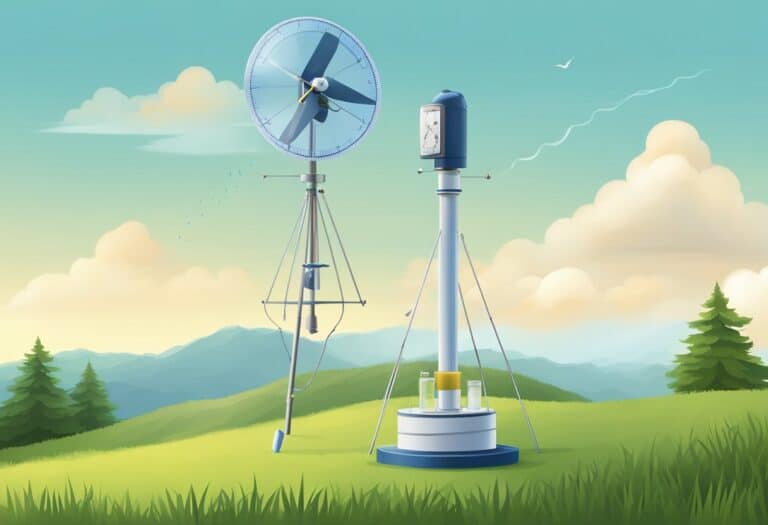Assessing whether your air purifier is functioning correctly is key to maintaining good indoor air quality.
An operational air purifier should circulate air effectively, reduce allergens and pollutants, and maintain a consistent level of performance. To determine if your unit is working, you’ll want to monitor changes in air quality, look for visual indicators on the device, listen for consistent sound output, and ensure that the filters are not excessively dirty or damaged.
Regular maintenance of your air purifier, including cleaning and timely filter replacement, is crucial to ensure it runs at peak efficiency. The air purifier’s manual can be an invaluable resource, providing precise guidance on upkeep and identifying indicators of a malfunctioning unit. Recognizing signs of decreased functionality, such as unusual noises, odors, or a persistent layer of dust within the environment, can signal that your air purifier needs attention.
Furthermore, troubleshooting common issues or resorting to professional help can resolve problems and restore proper operation.
To check if an air purifier is working, observe air quality improvement, listen for consistent operation, and ensure filters are clean. Regular maintenance is key.
Understanding Air Purifier Functionality
To assess whether your air purifier is functioning as it should, it’s crucial to understand its components and the signs of proper operation.
Key Components and Their Roles
Filter: The heart of an air purifier is its filter, typically a HEPA filter, which is designed to capture 99.97% of particles as small as 0.3 microns. This includes dust, pollen, and other contaminants.
Fan: The fan circulates air through the filter, ensuring continuous air quality improvement.
Sensor: More advanced purifiers are equipped with a sensor to detect levels of pollutants and adjust the fan speed accordingly.
Indicators of Proper Operation
-
Noise Level: A change in noise level usually indicates a change in fan speed, which may be a response to detected pollutants or odors.
-
Air Quality Indicator: Many purifiers feature a light or display that provides real-time feedback on the current air quality, hinting at the device’s effectiveness against pollutants.
Remember, regular maintenance, such as filter changes, ensures that your air purifier continues to function efficiently, keeping indoor air clean and free of contaminants.
Maintenance and Upkeep
Ensuring that your air purifier operates effectively involves regular maintenance, which includes diligent cleaning and timely filter replacement. Adhering to these tasks helps prevent buildup of dust and debris, which can impede the purifier’s performance.
Regular Cleaning and Care
To maintain the optimal performance of your air purifier, regular cleaning is essential. Begin by unplugging the unit, then gently wipe the exterior with a soft, dry cloth to remove dust. For the interior and the pre-filter, which traps large particles, consult your device’s manual—most can be cleaned by either vacuuming or washing. Doing this every two to four weeks can prevent the pre-filter from becoming clogged, thus extending the lifespan of the main filters.
- Cleaning Schedule:
- Exterior: Wipe with dry cloth every week.
- Pre-filter: Vacuum or wash every two to four weeks.
- Interior surfaces and fans: Dust monthly.
When to Replace Filters
Your air purifier’s filter change is crucial for maintaining clean indoor air. Over time, the air filters can become saturated with pollutants, losing their efficiency. Generally, HEPA filters should be replaced every 12 to 18 months, and activated carbon filters every 3 to 6 months. However, if you have pets, allergies, or smoke indoors, more frequent changes might be necessary.
- Replacement Indicators:
- Increased noise or reduced airflow may signal a clogged or dirty filter.
- Some models have a filter replacement indicator light; otherwise, check the filters manually every 3 months.
Ensure to consult your air purifier’s manual for specific instructions, as maintenance requirements can vary by model.
Performance Assessment Techniques
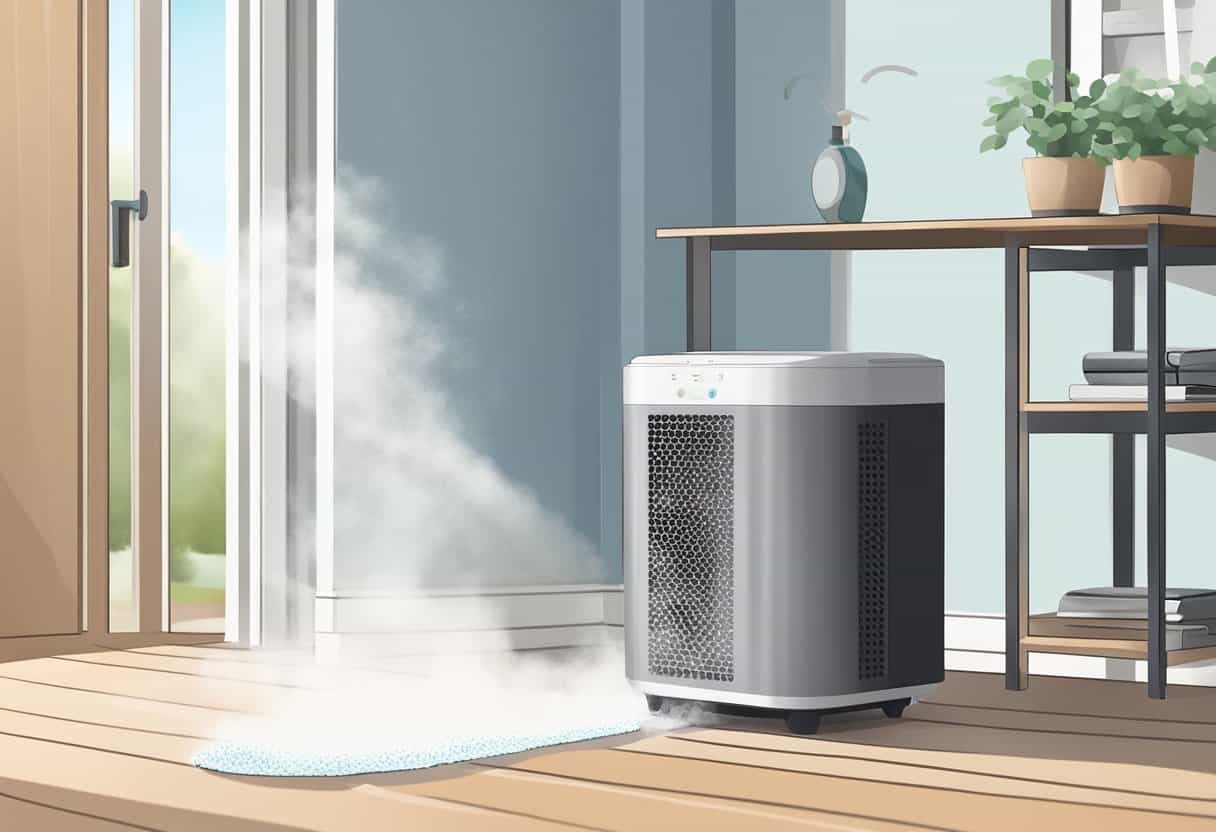
Ensuring your air purifier is functioning effectively involves specific strategies. The following techniques will guide you through the evaluation process, using both manual inspections and device-assisted monitoring to assess your air purifier’s effectiveness.
Visual Inspections and Manual Checks
Visual inspections are a straightforward method to ascertain if your air purifier is in good working order. One of the simplest tests is to check the airflow. Place your hand near the vent to feel if air is moving through the device. A substantial decrease in airflow could indicate a clogged filter or an issue with the internal fan. A filter test can be conducted by examining the filter for accumulated particles; a dirty filter means your air purifier is capturing contaminants, but it also signals that it’s time for cleaning or replacement.
Using Air Quality Monitors
Incorporating an air quality monitor can provide you with real-time data about the particulate matter and pollutant levels in your room. Such devices will usually give you a specific reading that indicates whether your air purifier is working properly. For a more rigorous air quality monitor test, you can use a chemical test kit to detect certain types of pollutants. Monitoring changes over time can help you deduce the purifier’s efficiency and understand when maintenance or a filter change is necessary. Remember to always follow the manufacturer’s instructions for the most accurate methods of performance assessment.
Troubleshooting Common Issues
When an air purifier is not performing optimally, quickly identifying and addressing common issues can restore its effectiveness. Let’s explore the specific steps to troubleshoot these problems and understand your options for repair or warranty service.
Identifying and Resolving Problems
To determine if your air purifier is working effectively, check for these key indicators:
-
Indicator Lights: Verify that all indicator lights are functioning as expected. A change in color or a blinking light often signifies a need for maintenance.
-
Consistent Performance: Make sure the air purifier is running consistently. Intermittent operation can hint at internal electrical issues.
-
Airflow Blockages: Inspect for blockages such as accumulated dirt or debris in the filters or intake and exhaust grills. Clean or replace the filters according to the manufacturer’s guidelines.
-
Noise Level: Listen for loud noise or unusual sounds. This can indicate a clogged filter, loose internal parts, or a failing motor.
-
Reset Procedure: If the air purifier has a reset function, use it to see if it resolves temporary malfunctions.
Professional Repair and Warranty Information
-
Warranty Status: Always check your warranty status. If your air purifier is still under warranty, contact the manufacturer for service options.
-
Authorized Repair: For issues beyond simple troubleshooting, such as electrical problems or motor dysfunction, seek professional repair. Utilizing an authorized service provider ensures that your unit is repaired to factory standards and may be covered by your warranty.
Frequently Asked Questions
When considering the functionality of your air purifier, there are key indicators and tests you can perform to gauge its effectiveness. Understanding these can help ensure that your air purifier is working optimally.
What are the indicators of an effective air purifier?
An effective air purifier often features a decrease in detectable dust and allergens in your environment. Many purifiers have filters with a Clean Air Delivery Rate (CADR) score, which can serve as a performance indicator.
Can you visually observe the effectiveness of an air purifier, and if so, how?
Yes, you may notice less dust accumulation on surfaces and a visible reduction in airborne particles when sunlight shines through a window. An air purifier’s impact might also be visually identified by examining the color change in the filters as they trap contaminants.
What improvements in air quality should I expect after installing an air purifier?
After installing an air purifier, you should expect a noticeable reduction in common airborne pollutants, such as dust, pet dander, pollen, and smoke, contributing to a fresher smelling home environment.
How can I test my air purifier to ensure it is functioning properly?
To test your air purifier, you can check the airflow from the unit, inspect the filter for accumulation of particles, and use an indoor air quality monitor to measure pollutant levels before and after the purifier runs for a certain period.
In what time frame should I anticipate noticing benefits after using an air purifier?
The time frame for noticing benefits can vary, but typically, improvements in air quality might be detected within a few hours to a couple of days after regular use of the air purifier.
How should an air quality monitor be used to gauge the performance of an air purifier?
An air quality monitor can be used to record baseline air quality levels prior to using your air purifier and then again after the purifier has been operating. Comparing these readings will help determine the effectiveness of your air purifier in real-time.

